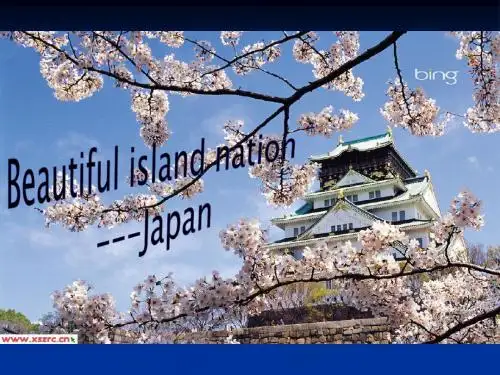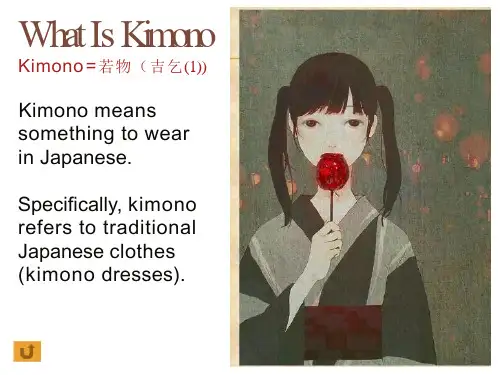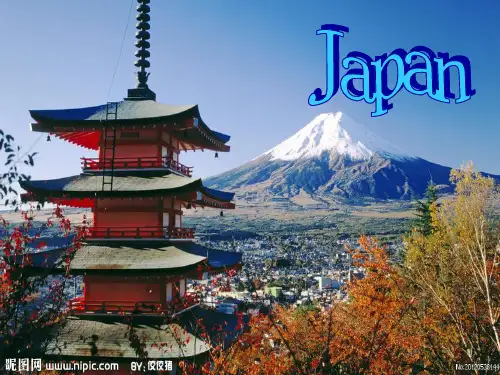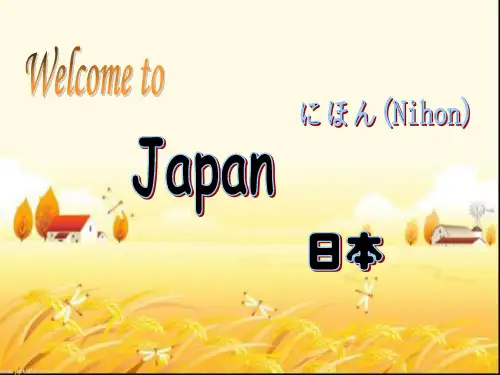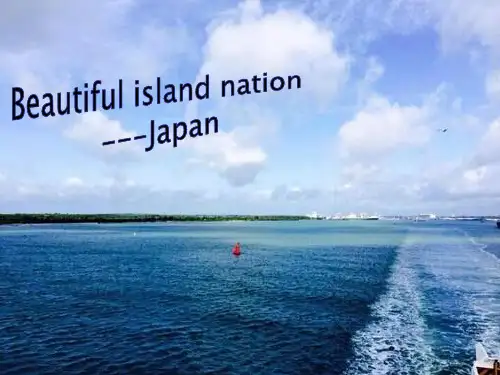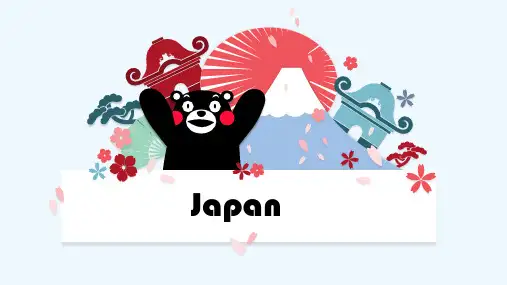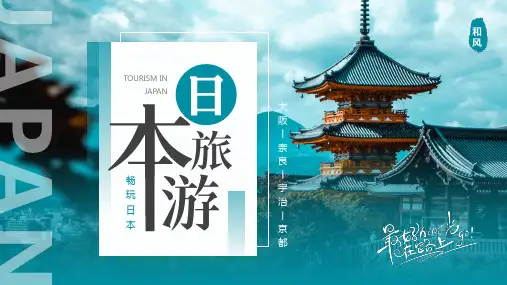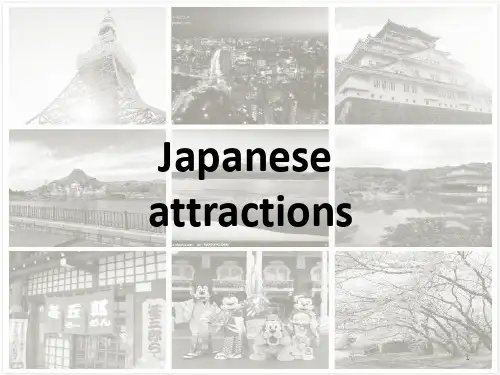Composition
• The main islands, sometimes called the "Home Islands", are (from north to south) Hokkaidō, Honshū (the "mainland"), Shikoku and Kyūshū. There are also about 3,000 smaller islands, including Okinawa, and islets, some inhabited and others uninhabited. In total, as of 2006, Japan's territory is 377,923.1 km² , of which 374,834 km²is land and 3,091 km²water. This makes Japan's total area slightly smaller than the U.S. state of Montana, slightly bigger than the Brazilian state of Mato Grosso do Sul. Japan is bigger than Germany, Malaysia, New Zealand and the U.K., and is 1.7 times the (和服)
The kimono is a Japanese traditional garment worn by women, men and children. The word "kimono", which literally means a "thing to wear" (ki "wear" and mono "thing"), has come to denote these full-length robes. The standard plural of the word kimono in English is kimonos,[but the unmarked Japanese plural kimono is also sometimes used. Kimono are T-shaped, straight-lined robes worn so that the hem falls to the ankle, with attached collars and long, wide sleeves. Kimono are wrapped around the body, always with the left side over the right (except when dressing the dead for burial),[and secured by a sash called an obi, which is tied at the back. Kimono are generally worn with traditional footwear and split-toe socksToday, kimono are most often worn by women, and on special occasions. Traditionally, unmarried women wore a style of kimono called furisodewith almost floor-length sleeves, on special occasions. A few older women and even fewer men still wear the kimono on a daily basis. Men wear the kimono most often at weddings, tea ceremonies, and other very special or very formal occasions. Professional sumo wrestlers are often seen in the kimono because they are required to wear traditional Japanese dress whenever appearing in public
